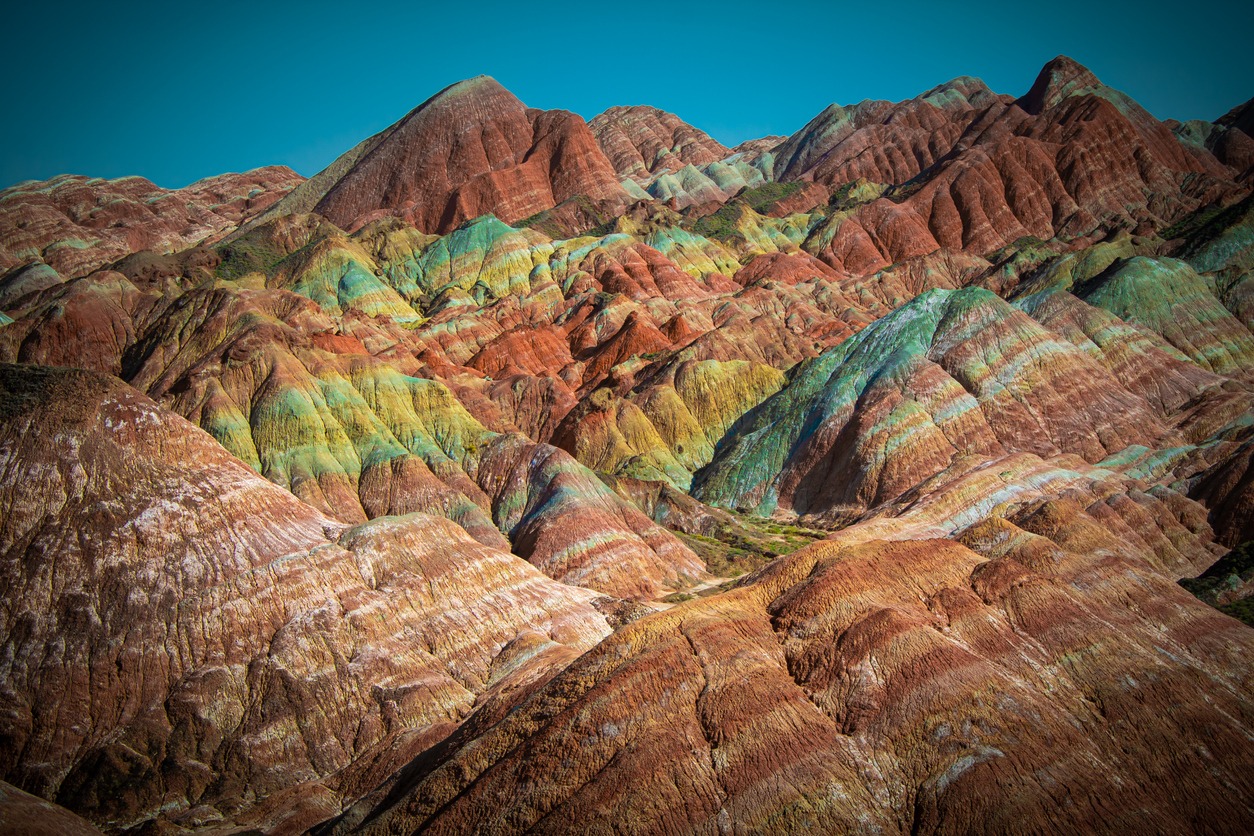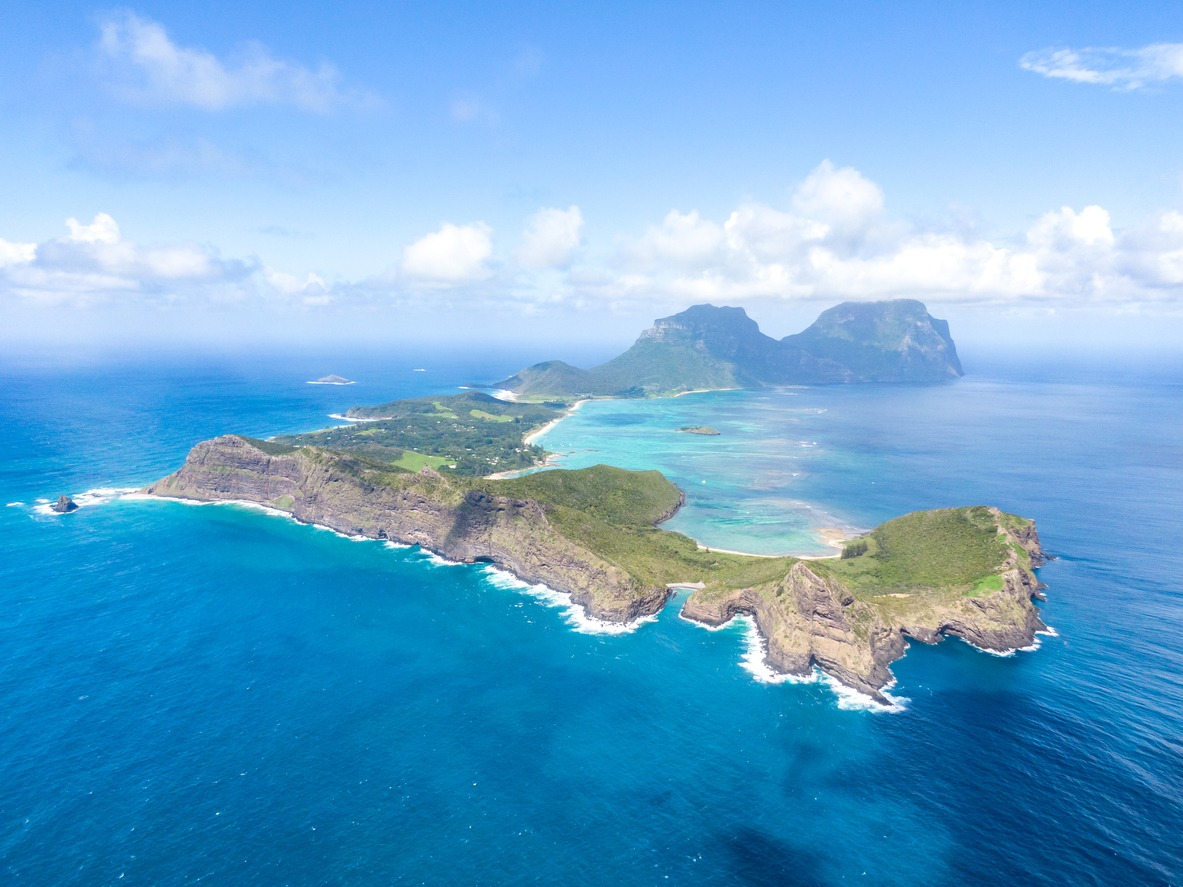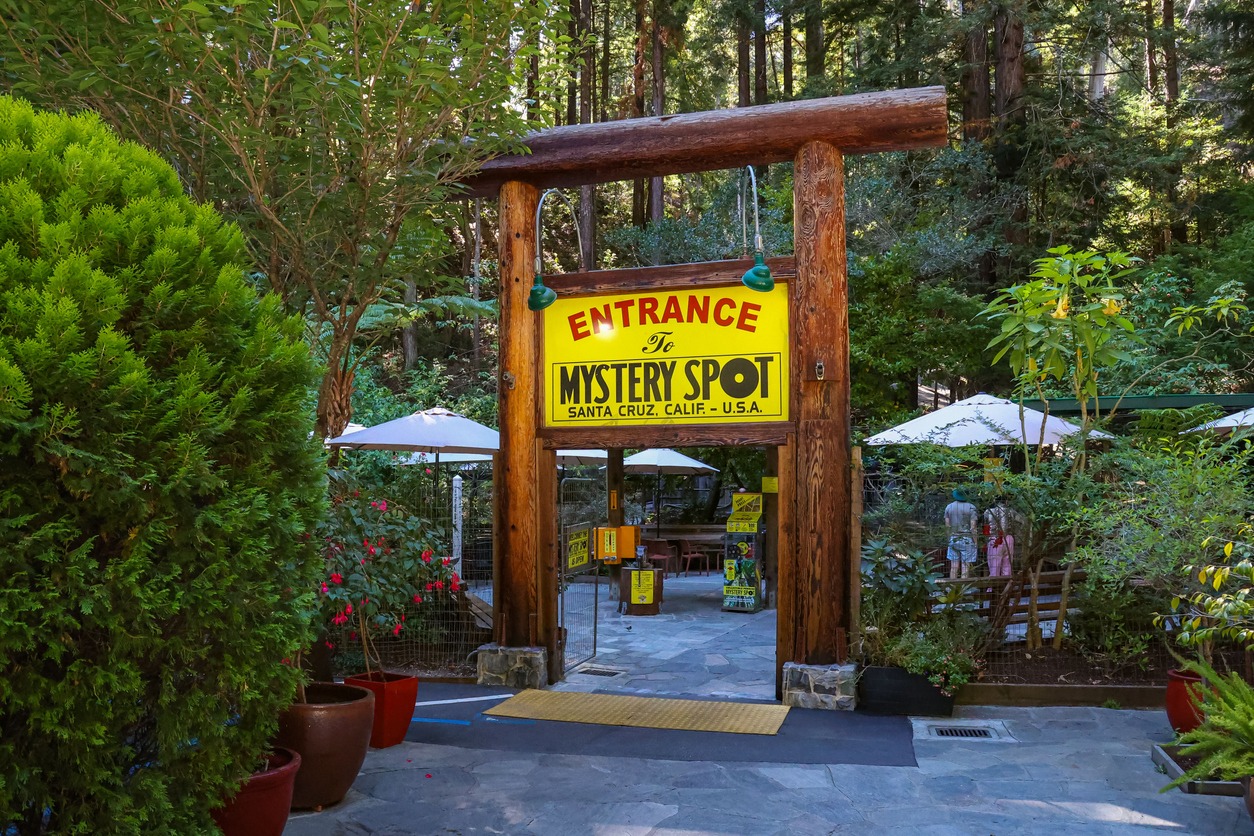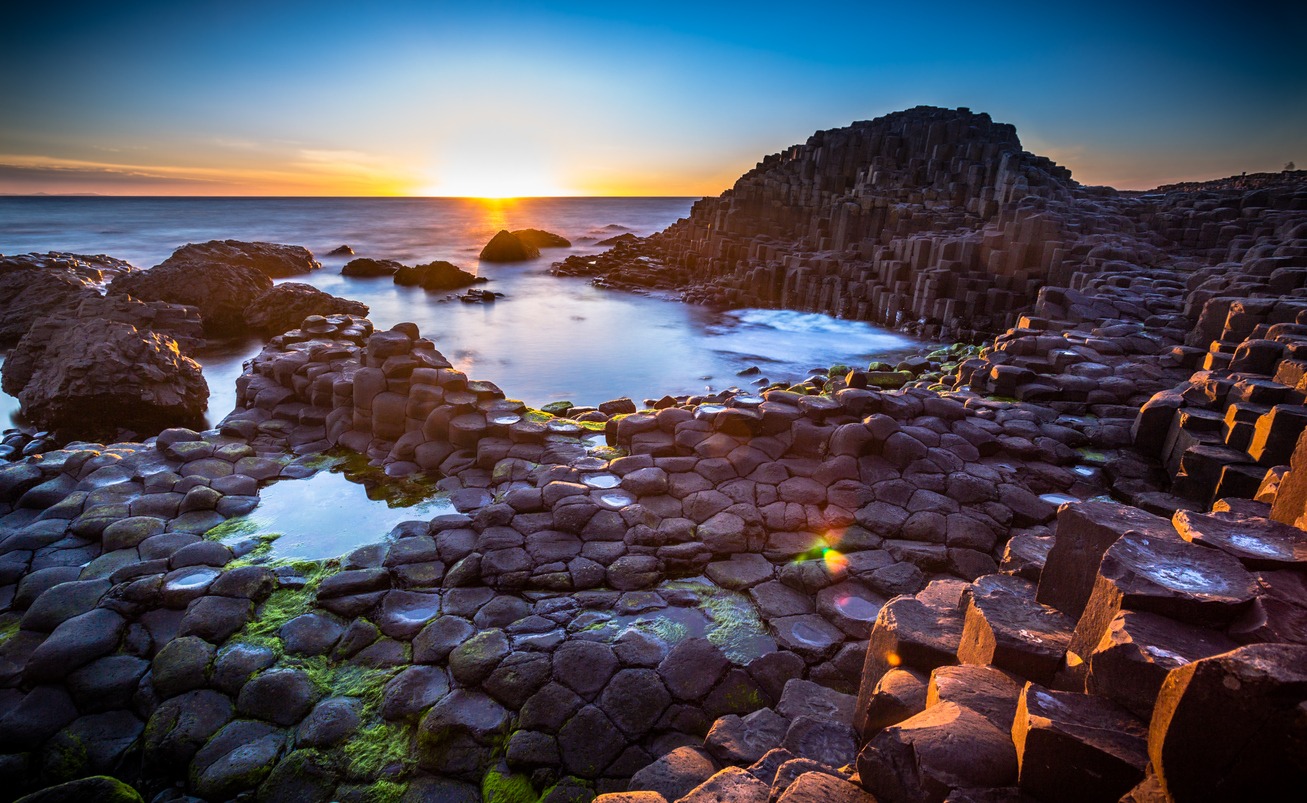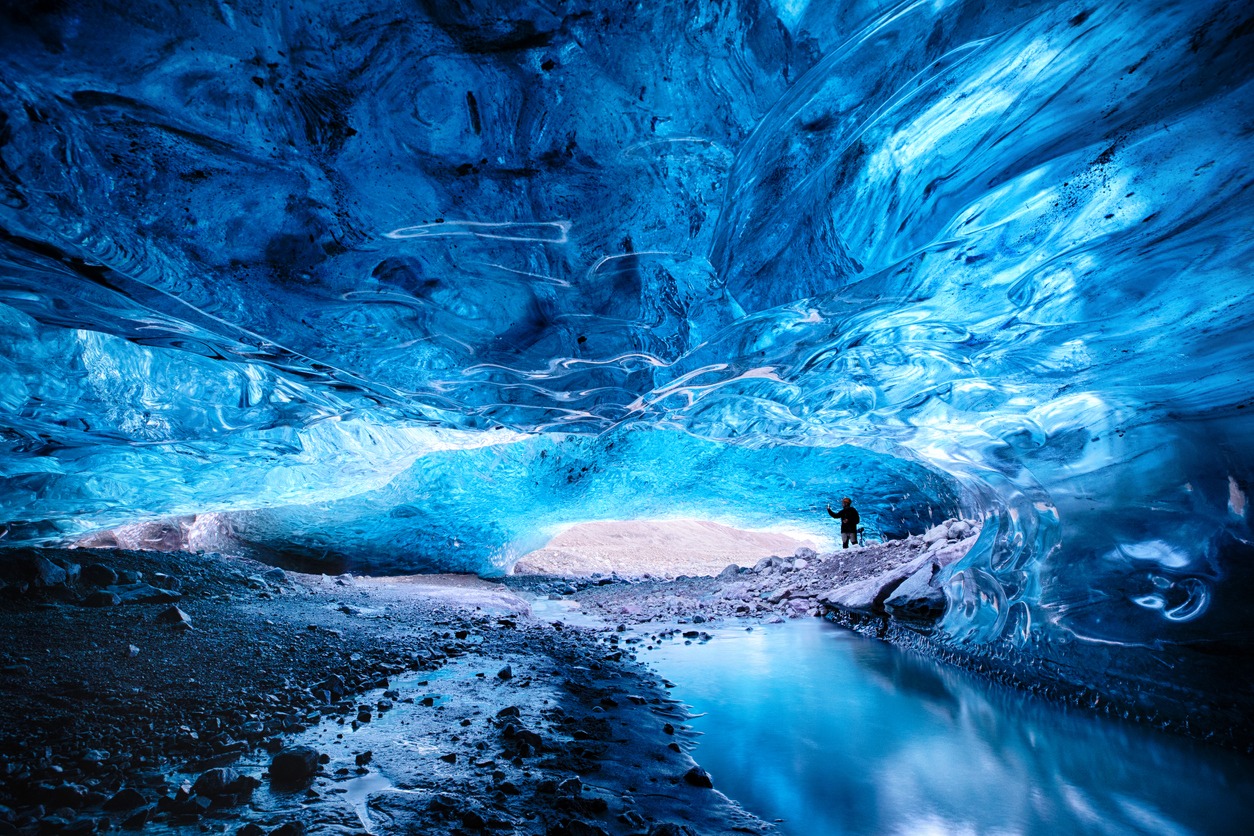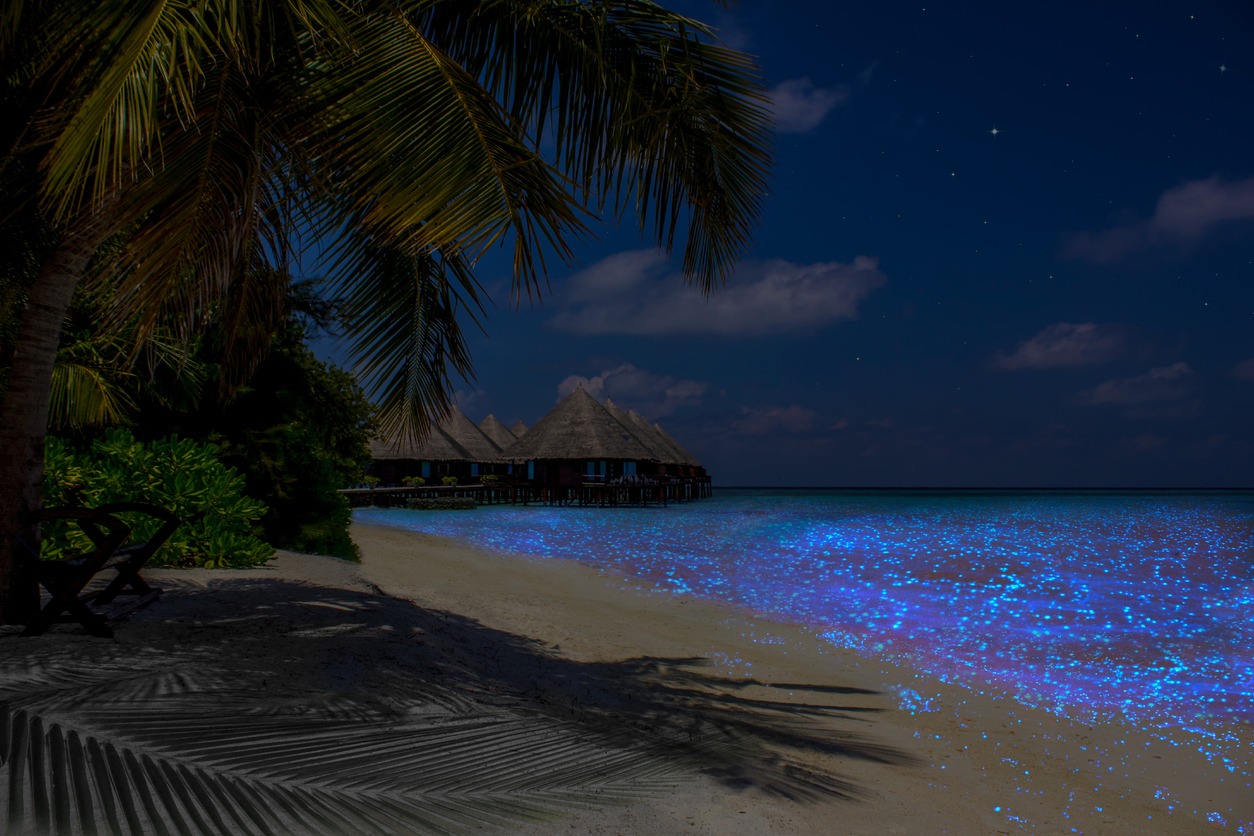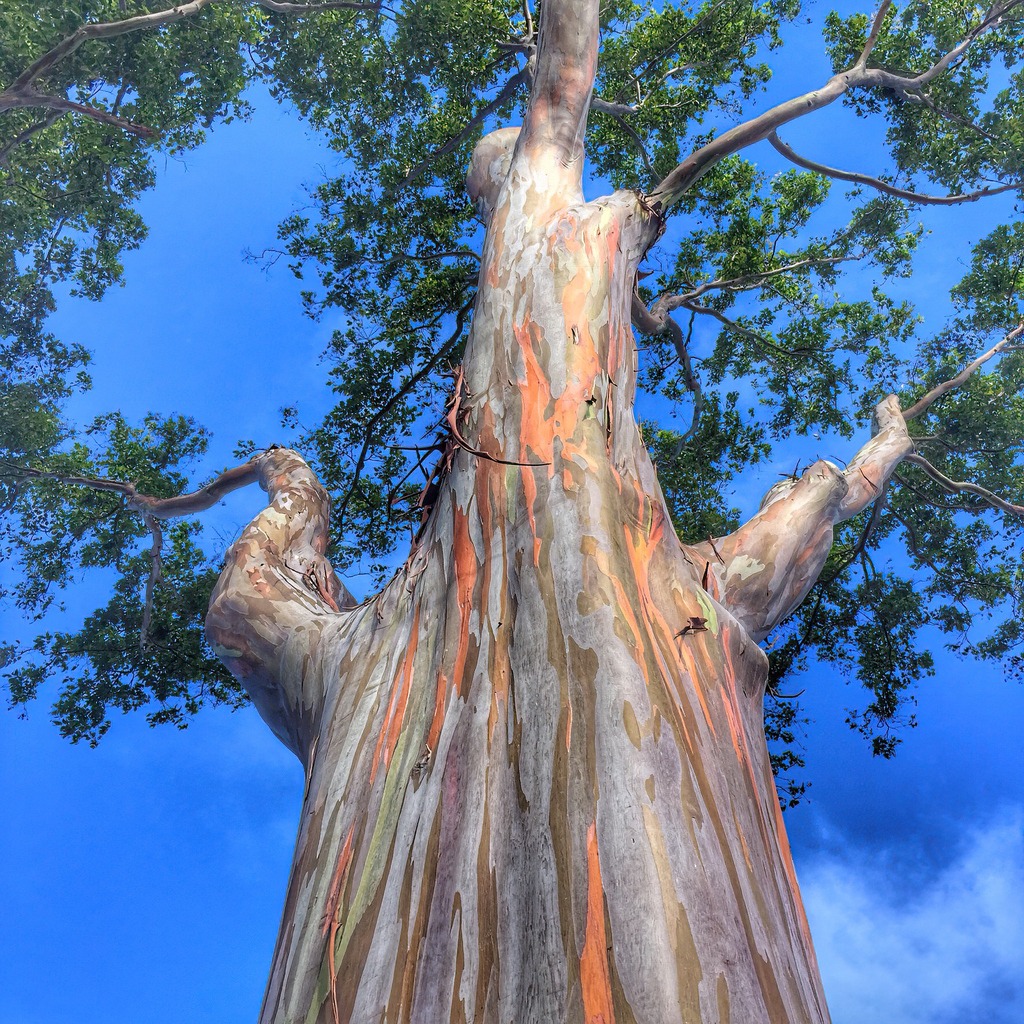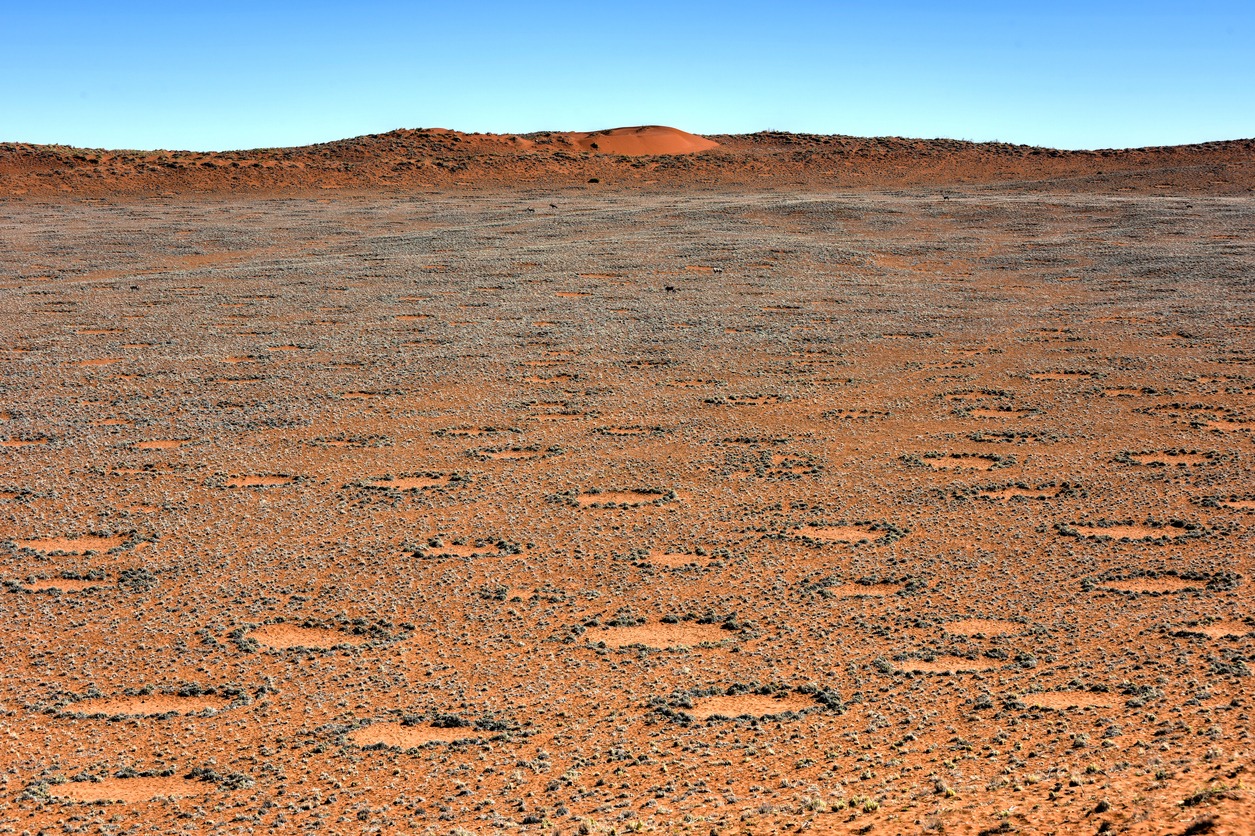The Earth is truly an extraordinary place, filled with wonders and mysteries that keep surprising us. Even with the advancement of science and technology, there are still so many secrets hidden in its corners. From mysterious lights flickering in the night to unusual craters and roads that seem to defy gravity, our planet is full of these quirky oddities. They’re fascinating, a bit spooky, and absolutely captivating. It’s like Earth is holding onto some secrets just to keep us intrigued and eager to discover more. These anomalies are perfect reminders of how much more there is to explore and understand about our amazing planet.
Here are some weird and wonderful anomalies in nature:
Geographical Anomalies
Lord Howe Island in Australia
At first look, Lord Howe Island in Australia doesn’t seem odd – it’s actually a picturesque island filled with unique biodiversity. But a curious anomaly makes this tiny volcanic paradise stand out: it seems to have its own time zone.
This tiny island imposed a time zone it shouldn’t be in. Even though it’s more than 600 miles away from mainland Australia, the islanders have chosen to sync their clocks with New South Wales. It’s the only place in the world with the UTC+10:30 time zone, adding just 30 minutes instead of the usual hour during Daylight Savings Time. It’s like they’ve separated their little time bubble from the rest of the world.
Aside from toying with time, Lord Howe Island is a pretty amazing place in other ways, too. It’s a volcanic paradise and a UNESCO-protected reserve, teeming with unique biodiversity. There’s no phone signal there, so it’s a great spot to unplug and enjoy nature. Plus, just southwest of the island is Ball’s Pyramid, which is the tallest volcanic stack in the world and home to the planet’s rarest insect, the Dryococelus australis.
The Santa Cruz Mystery Spot in California
The Santa Cruz Mystery Spot in California is one of those places that’ll make you question your own eyes. Set up on what’s called a gravity hill, it’s a place where the normal rules of gravity and perspective seem to bend.
This spot became a thing way back in the 1940s, during the Golden Age of roadside attractions in the U.S. When you visit, you’re in for a series of head-scratching moments. Balls seem to roll uphill, people appear to stand at impossible angles, and you might find yourself leaning way over without falling down – think of the Titanic pose but on solid ground. It’s not magic, though; it’s all about optical illusions created by the peculiar angle of the hill. There are places like this in many spots worldwide, but Santa Cruz has turned this natural anomaly into a full-blown tourist attraction.
The Mystery Spot also serves as a slice of mid-century Americana, a fun, family-friendly place that offers a break from the tech-heavy world of Silicon Valley, which isn’t too far away.
Giant’s Causeway in Ireland
The Giant’s Causeway in Ireland is like something straight out of a fantasy book. It’s this incredible coastline dotted with thousands of hexagonal columns, and guess what? They’re all natural. This stunning formation is the result of an ancient volcanic eruption.
Here’s how it happened: a massive volcanic eruption occurred millions of years ago. The lava from this eruption flowed out into the sea. Now, when this super hot lava met the cool seawater, it began to solidify. But instead of just forming a plain old rock surface, it cooled in such a way that it created these columns, most of which are hexagonally shaped. It’s like nature decided to play architect!
Legend has it that the columns are the remains of a causeway built by a giant. The story goes that the Irish giant, Finn McCool, built the causeway to walk over to Scotland to fight another giant.
These columns are so neatly packed and geometrically perfect that it’s hard to believe they were formed naturally. Some of these columns are as tall as 12 meters, which is as high as a three-story building!
Today, the Giant’s Causeway is not just a geological wonder but also a popular tourist attraction. If you ever visit, you’ll get to walk on these ancient stones and feel like you’re stepping right into a piece of Earth’s fiery past.
The Zhangye Danxia Landform in China
A true natural masterpiece, the Zhangye Danxia Landform in China showcases vibrant, rainbow-like hills that look painted. Located in the Gansu Province, the rolling hills and sharp cliffs look as if they’ve been painted in stripes of red, yellow, orange, green, and blue.
This incredible appearance of the mountain is caused by millions of years of mineral deposits and red sandstone formation, combined with the forces of erosion and weathering. Over time, the layers of different minerals, along with sandstone and other sedimentary rocks, have been pressed together. Weather elements like wind and rain have sculpted these formations into the breathtaking landscape we see today.
Known as the “Rainbow Mountains,” the Zhangye Danxia Landform has become a major tourist attraction, drawing visitors from all over the world. Photographers, in particular, are captivated by the vibrant hues and the ever-changing light conditions, which can transform the landscape’s appearance throughout the day. Sunrise and sunset are particularly magical times to view the Danxia landform, as the soft light enhances the colors and creates a surreal, dreamlike atmosphere.
Ice Caves in Iceland
The Ice Caves in Iceland are like nature’s own art galleries but way cooler (literally!). Tucked away within Vatnajökull glacier, the largest ice cap in Iceland and one of the largest in Europe, these caves are a dazzling natural spectacle. Every winter, as temperatures plummet, these caves take shape, offering a world of stunning blue ice, like walking inside a giant, frozen gemstone.
So, what makes these caves so special? Well, for starters, they’re naturally formed. The glacial meltwater seeps down during the summer, carving out new caves and tunnels. Then, come winter, these waterways freeze, leaving behind these incredible, crystal-like structures. It’s like the glacier is constantly reinventing itself, creating new designs each year. This means that a cave you visit one year might not exist the next, or it might have transformed into something entirely different.
When you step inside these caves, it’s like entering another world. The ice can be so clear that you can see right through it or so densely packed that it glows with a deep, ethereal blue. Photographers and nature lovers flock to these caves for the surreal experience of being surrounded by ice in every direction. The way the light plays through the ice, casting shadows and colors, is just breathtaking.
However, these caves aren’t just pretty to look at; they’re a stark reminder of nature’s power and the effects of climate change. The Vatnajökull glacier, like many others, is shrinking. This means the ice caves are constantly changing, and some may eventually disappear.
Quirky Flora and Fauna
Goats with Rectangular Pupils
Have you ever noticed a goat’s eyes? Goats have this really unique feature – rectangular pupils. And it’s not just a cool look; there’s a fascinating reason behind it.
Since we are used to seeing round pupils, like in humans, dogs, cats, and other kinds of animals, we own as pets – the goats’ horizontal, almost rectangular pupils are rather odd. But it isn’t just a random quirk of nature; it’s a clever adaptation that helps them survive.
The shape of their pupils allows them to see nearly all around them. Their vision covers an impressive 320 to 340 degrees. This means they can see almost everything around them without even needing to turn their heads! It’s a fantastic survival tool, especially for those who need to be constantly aware of predators.
Also, the rectangular pupils help goats see better in the dark. Because they can open wider than round pupils, they let in more light. At the same time, they can close really tight during bright daylight, which helps protect the goats’ eyes from harsh sunlight. It’s like having built-in sunglasses and night vision goggles all in one.
Blind Spots in Horses
Horses, majestic as they are, have a little quirk in their vision that not everyone knows about. They have two blind spots: one directly in front of them and the other right behind their head. It sounds a bit surprising, right? But when you think about it, it makes a lot of sense, given their physical build and lifestyle.
Let’s start with the blind spot in front. Because of the way a horse’s eyes are positioned (on the sides of their head), they can’t actually see right in front of their noses. This wide placement gives them a broad field of vision to spot predators, but it comes with a trade-off. That’s why you might see horses moving their heads up and down or side to side – they’re trying to get a better look at what’s in front of them.
Then there’s the blind spot right behind them. Considering their long faces and necks, it’s pretty obvious. It’s a substantial area where they just can’t see anything, making it a vulnerable spot. That’s why you always hear people advising you to approach horses from the side, where they can see you, rather than from directly behind, where you might startle them.
Interestingly, despite these blind spots, horses have a pretty impressive range of vision. They can see a total field of up to 350 degrees, which is huge compared to humans. But they don’t see the world quite like we do. For instance, horses are somewhat color-blind to red and see the world in a different spectrum.
Also, the clarity of their vision is different from ours. Their vision is about 20/33, which means they don’t see as sharply as a human with a perfect 20/20 vision. But, their large eyes (the largest of any land mammal!) do a great job at gathering light, which helps their night vision.
Unusual Insects and Snails
Nature has some pretty wild creatures in the form of unusual insects and snails. Take, for instance, the stick insect Phryganistria tamdaoensis and the snail Phyllodesmium acanthorhinum.
The Phryganistria tamdaoensis, a type of stick insect, is great at camouflaging. They can be up to 25 cm in length, and their brown, twig-like appearance makes them almost indistinguishable from actual sticks. This survival tactic allows them to hide in plain sight from predators. They’re found in the Tam-Dao National Park in northern Vietnam and are a favorite among researchers because of their impressive disguise skills. So, if you try to pick sticks and twigs in that area, don’t be surprised if it suddenly moves!
Then, there’s the Phyllodesmium acanthorhinum, a snail living in the sea off Japan. What sets this snail apart is its extraordinary beauty. It’s not your typical garden snail; it’s more like an underwater jewel. Measuring just 17 to 18 mm, this snail boasts a striking combination of red, blue, white, and gold colors. Snails add a splash of color to the ocean floor, making them a delight for divers and marine biologists.
Surreal Natural Phenomena
Bioluminescent Shore, Maldives
The Bioluminescent Shore in the Maldives looks like something straight out of a fairy tale. Imagine walking along the beach at night, and the sand and water around your feet start glowing, lighting up like a starry night sky. This phenomenon is created by bioluminescent phytoplankton, tiny marine organisms emitting light.
So, what’s the deal with these glowing phytoplankton? It’s their natural form of defense. When these tiny creatures are disturbed by waves or footsteps, they emit light to startle predators or attract even bigger predators to eat the ones trying to snack on them.
Visiting these shores is like stepping into a dream. The water glows a vibrant blue, and every movement creates light patterns in the water. It’s a popular spot for night swimming and photography, as you can imagine. The sight of the bioluminescent waves breaking on the shore or swirling around your hands and feet is truly breathtaking.
Bioluminescent beaches aren’t exclusive to the Maldives, though. Similar sights can be seen in other parts of the world, like in Puerto Rico, California, and Australia. But the Maldives is definitely one of the most famous spots for this natural light show at the beach.
Rainbow Eucalyptus Trees
Rainbow Eucalyptus trees are like nature’s own living, breathing art pieces. Primarily found in the Philippines and Indonesia, these trees are famous for their stunningly colorful bark. It’s not just one or two colors we’re talking about here, but a whole spectrum – vibrant greens, blues, purples, oranges, and even maroons. It’s like someone took a paintbrush and went wild on the tree trunk!
These trees are uniquely colorful because of their equally unique bark-shedding process. As the tree grows, it sheds its outer bark, revealing a bright green layer underneath. This green then gradually matures and changes color. It goes through shades of blue, purple, orange, and maroon before finally turning brown. This cycle of shedding and color change keeps going throughout the tree’s life, making each tree a constantly evolving piece of art.
In some parts of the world, the rainbow eucalyptus tree is grown for pulpwood used in papermaking. It’s a fast-growing tree, making it a sustainable choice for this purpose.
Travertine Terraces
Travertine terraces are one of those natural wonders that make you appreciate just how artistic Mother Nature can be. These terraces are formed from calcium carbonate that precipitates from geothermal waters. It sounds a bit technical, but the result is absolutely stunning.
Think of it like this: hot water from underground springs carries dissolved calcium carbonate. When this water reaches the surface and cools down, the calcium carbonate starts to solidify. Over time, this process creates layers of hardened minerals, forming these natural terraces that look like cascading stone waterfalls. They’re often found in areas with volcanic activity, where geothermal springs are common.
One of the best-known examples of travertine terraces is in Pamukkale, Turkey. Here, the terraces have been formed over millennia and have become famous for their bright white, otherworldly appearance. They’re so beautiful and unique that the area is a UNESCO World Heritage Site. Visitors are often struck by the sight of these terraces, which look like they could be made of snow or clouds rather than stone.
Another notable example is the Mammoth Hot Springs in Yellowstone National Park, USA. The travertine formations here take on different colors due to the presence of algae, making for a spectacular and colorful landscape.
What’s fascinating about these terraces is not just their beauty but also how they continuously change and evolve. The flow of water, the amount of minerals, and even the types of bacteria present in the area can affect how these terraces look over time.
Mysterious Natural Occurrences
Fairy Circles in Namibia
Found in the Namib Desert, the Fairy Circles in Namibia are a fascinating and mysterious natural phenomenon. These are circular patches of bare land, perfectly spaced and surrounded by a ring of stimulated growth of grass. The circles are spread out over vast areas of the desert, which is both intriguing and beautiful.
The formation of these circles has been a subject of scientific curiosity for years. One popular theory suggests that these circles are the result of the water distribution pattern in this arid landscape. In this harsh desert environment, water is extremely scarce. The theory posits that the vegetation competes intensely for this limited water resource. The intense competition leads to the formation of these bare patches, as weaker plants die off, while the stronger ones around the edge of the circle thrive and form a ring.
Another interesting aspect of this theory involves termites. Some researchers believe these insects might play a significant role in forming fairy circles. The idea is that termites might be clearing the vegetation in these circles, thus affecting the soil and water distribution. This termite activity, combined with the plant competition for water, could be shaping these mysterious patterns.
What makes Fairy Circles even more intriguing is their regularity and distribution. The circles range from a few feet to several meters in diameter, and they’re evenly spaced, creating a honeycomb-like pattern across the desert. This adds to the mystique of these natural formations, as they seem almost too orderly to be a work of nature.
Light Pillars in USA, Canada, Arctic
Light Pillars are a beautiful and somewhat eerie phenomenon seen in colder regions of the world, such as the USA, Canada, and the Arctic. They appear as vertical columns of light in the sky, and they’re actually an optical illusion. The illusion is created when light, whether from the sun, moon, or artificial sources, reflects off the surfaces of millions of tiny ice crystals suspended in the atmosphere. These ice crystals are usually found in very cold air and need to be near the ground to form light pillars.
The conditions have to be just right for light pillars to appear. The air must be calm, and the ice crystals have to be flat and horizontally aligned. When light hits these crystals, it’s reflected so that it looks like a light column extends upward from the light source.
One of the most fascinating things about light pillars is that they’re not actually located in the sky. The pillars are an optical illusion, so they’re not tangible objects that can be approached or touched. They’re purely the result of light interacting with ice crystals, creating a visual effect that can be seen from great distances.
Light pillars can vary in color, too. They often take on the color of the light source – so a pillar formed by the setting sun might be red or orange, while those formed by streetlights or other artificial lights might be white or yellow.
Sky Mirror in Malaysia
The Sky Mirror in Malaysia is one of those rare natural wonders that leave you spellbound. Located off the coast of Sasaran Beach, near Kuala Lumpur, it’s known as the “Mirror of the Sky.” This stunning phenomenon occurs only a few days each month during the new moon and full moon periods.
What makes the Sky Mirror so special is its ability to create a perfect reflection of the sky on its surface. This happens when the tides are at their lowest, revealing a stretch of shallow water and smooth sand. The result is a breathtaking and almost surreal mirror effect, where the sky and the ground merge.
Visitors to Sasaran Beach during these times are treated to a unique experience where they can walk on this shallow beach and see the sky reflected beneath their feet. It’s an incredible opportunity for photography. Besides being a visual spectacle, it’s also an intriguing natural occurrence. The phenomenon results from the lunar cycle, tides, and the flat, reflective sandbar. It’s a delicate balance that requires just the right conditions to occur.
Apart from the mirror effect, the area is also rich in marine life. During low tide, you might also spot various sea creatures, adding to the wonder of the place.
